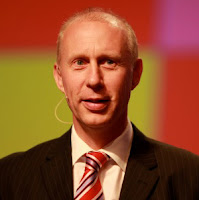By Rhonda Basler
Director, Customer Engagement
Hallmark Business Connections
Companies often struggle to attain perfection in order to win in the marketplace. We aim for flawless execution and high-quality products, but perfection is typically reserved for snowflakes and warm, sunny spring days. Although businesses consistently try to hit the mark, perfection is not always feasible. To win in the marketplace, we must first focus on winning with our customers by creating standout experiences.
What does it take for your business to create truly remarkable experiences for your customers? It’s all about investing in the right areas. At Hallmark, we believe it starts by asking three simple yet specific questions, followed by careful consideration of each answer.
The first step to creating standout customer experiences is understanding the definitions of each of these three M’s: meaningful, memorable and measurable.
Does It Impact the Customer in a Direct and Personal Way That Is Meaningful to Them Specifically?
Meaningful experiences go well beyond the transaction to touch your customer on an emotional level. This kind of experience makes them feel good about their interaction with your company and the exchange they’ve had with the people who represent the business.
Is the Experience Meaningful Enough To Be Memorable?
Just because an experience is meaningful, doesn’t mean it will stand out in your customer’s mind. You need to determine if the customer will remember the experience a day, a week or a month later. Why is this so important? Only memorable experiences impact customer loyalty and retention. Think about it in these terms: If they don’t even remember the experience, it cannot impact how they feel about your company.
Can You Gauge the Effectiveness of the Experience in Measurable Ways?
We all have limits on our customer engagement budgets, so we must be able to prove the value of our investments. For years, businesses have used key performance indicators (KPIs) to determine how loyal, engaged and passionate their customers are about their companies. These metrics help us evaluate the equity your brand carries with customers, the loyalty of those same individuals, and the likelihood they will refer a friend or buy again. These metrics are critical to your success in creating positive experiences, time and time again. Quantitative measurements include things like customer retention rates and revenue increases, while qualitative analysis examines the voice of the customer and asks open-ended questions to derive value. The important part to remember is that all insights must be actionable, insightful and sharable.
Genuine Connections Create Customers Who Buy More, Spend More and Stay Longer
Companies depend on repeat business from customers. When your business focuses on creating these experiences again and again, you’ll find your customers will return for your top-notch care. This care turns customers into advocates who not only believe in your products, services and brands, but who also share their positive feelings and remarkable experiences with others, including friends, family and their social media networks.
Think about your favorite company. We all have a few. Why? According to the AMEX 2012 Global Customer Service Barometer, 75 percent of customers say they’ve spent more at a company where they’ve had positive customer service encounters. What is the common factor that links each of these customer service encounters that bring people back again and again? Simple. They were memorable.
Where Do You Go From Here?
Three M experiences turn bad situations around and make good interactions great. Start by considering where you want to be versus where you are today. Next time you interact with a customer, actively think through about the three M’s. When you do this every day, word gets out. Soon, you’ll be the company with passionate customer advocates.
Rhonda Basler leads the customer engagement segment at Hallmark Business Connections. An avid business trend watcher and strategic thinker, her customer advocacy expertise stems from over 15 years experience in data-driven brand marketing. Rhonda started her career working in both inbound and outbound customer service contact centers.




